Paula M. Block and Terry J. Erdmann have been involved with Star Trek from its earliest days, so it was only fitting the married pair would be tabbed to produce Five Decades of Fashion from the Final Frontier. Read on for our interview with the couple.
Vacations are meant for relaxation; it is the entire purpose behind taking them. Each year, Paula M. Block and her husband, Terry J. Erdmann, travel south to visit Los Angeles, the city they thrived in for decades before relocating to the calmer environment of Oregon. Erdmann explains with a chuckle that he needs his “yearly fix”. However, in 2014, their usual one-week trip to the City of Angels turned into a much longer stay after an unusual conversation with CBS Consumer Products Vice President, John Van Citters.
“He wondered if we would like to turn our vacation into an assignment,” Block explained.
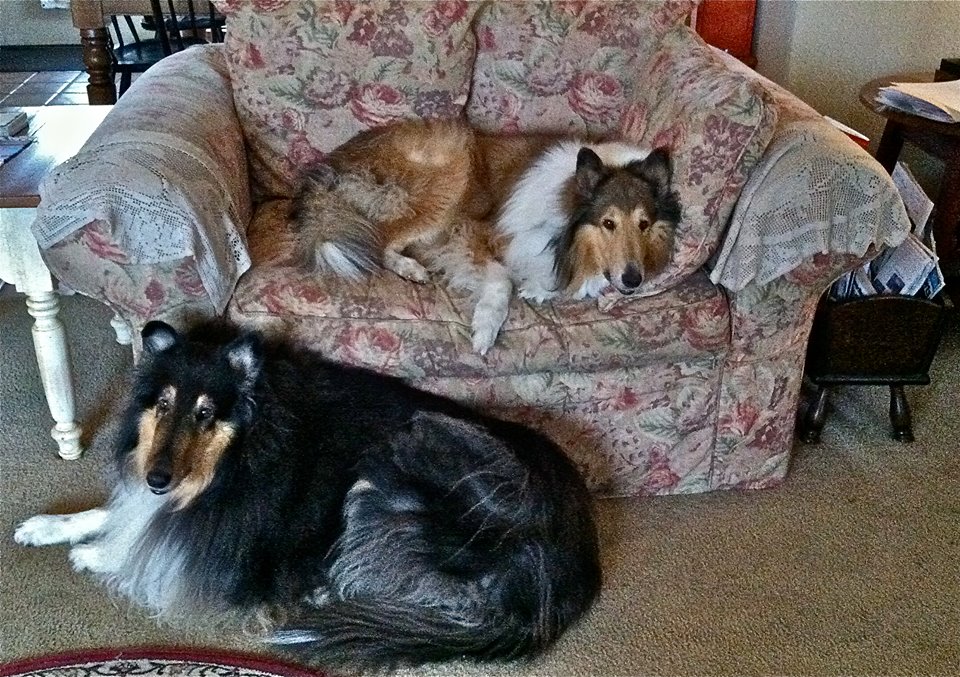
The couple’s collies Shadow and Mandy relax
What turned the intended vacation into a business trip was CBS licensee Insight Editions decision to publish Star Trek Costumes: Five Decades of Fashion from the Final Frontier. So, Block, Erdmann and their two collies, Shadow and Mandy, took a side trip to the CBS archives in Southern California, where the dogs snoozed unfazed near life-size replicas of a Gorn and the Salt Vampire, as their humans pulled images for inclusion in their latest publication on Gene Roddenberry’s universe.
“We could have truthfully spent a lot more time,” Block explained. “We spent the month going through all of the photography files CBS Consumer Products has on Star Trek. It was very familiar territory for me as I had helped set up the library about 15 years ago.”
Ten years ago, it was possible that this book would never have been made at all. 2006 was the year Christie’s Auctions, at the behest of Paramount Pictures and CBS, co-owners of the Star Trek franchise, sold pieces of the pop-culture phenomenon’s history, raising over $7 million. It would be the last time that the physical remnants of the entire history of Gene Roddenberry’s vision would be gathered together in one place.
“The studios sold off most everything,” Erdmann discussed. “Now, if you want to see an original model or costume a character wore, you have to go find it on your own. CBS still retains a few of the costumes that had been out on tour around the world, or on display at the Star Trek Experience when the auction took place.”
Fortunately, with the publication of Star Trek Costumes, while the collection is no longer physically in one location, fans can enjoy many of the costumes all in this one place. Yet their book is more than just a historical chronology of what was worn in the 23rd century and beyond, but an account from the first days with legendary designer William Ware Theiss at the couturial helm, to Robert Fletcher, Robert Blackman and others.
“In a sense, working on Star Trek Costumes was very similar our work on the Deep Space Nine Companion, in that they both were chronological in structure,” Block explained. “The Costume Book is a historical document, and the logical thing to do was write it in a chronological order.”
Sadly, as the Star Trek franchise ages, so do the people responsible for its creation. Theiss passed away in 1992, and Fletcher had long since retired, so Block and Erdmann had to track down previous interviews with those designers. However, they were able to interview Blackman, who also wrote the book’s introduction, as well as a number of actors who wore the costumes onscreen, and writers/producers who first envisioned characters in need of futuristic attire.
“It occurred to us not just to have wardrobe people,” Erdmann explained. “We had really wonderful interviews with Jonathan Frakes, Michael Forrest, LeVar Burton and Ronald D. Moore. We feel it’s not just us writing a book, but also relating stories that need to be shared.”
“We even asked Jonathan about how it felt to wear the “boy-toy” costume (from TNG’s first season episode ‘Angel One’),” Block added. “He remembered that real well.”
“Our jobs weren’t just stating the history, but adding those personal impressions. We’ve both been around long enough to have experienced all these shows first hand, so we wanted to make it more than just a history lesson.”
“I always think our job is to write an educational product, like a textbook,” Erdmann continued. “Make it really entertaining if possible, but also educational. Give it an historical value; make it a ‘how to’ for some young person who reads it. This book can give them a hint on how to make costumes, become a seamstress, or break into film and TV.”
While people like Frakes, Moore, and even J.J. Abrams, were just a phone call away, the person Erdmann refers to as one of the best researchers ever, his wife, had to dig into the depths of her memory and utilize all her skills to locate words that have not been reprinted over and over again from Theiss and Fletcher, which is no easy feat in the former’s case, as Theiss was notorious for not granting interviews.
However, Block recalled a fanzine from when The Original Series was on the air that featured a two-part interview with Theiss, conducted by none other than writer Dorothy (D.C.) Fontana. Block was able to track down a copy. Unearthing a nearly 50-year old fanzine guarantees that most fans have never read these quotes from Theiss, which is among one of the rare finds included in Star Trek Costumes (one interesting note Theiss stated was that Kirk’s familiar “gold” command tunic was actually more of a green color; it appeared gold on screen due to the lighting and type of film used).
Publisher Insight Editions assigned a professional photographer to shoot the items in CBS’s archives, as well as some that are now in the collection of private owners who had bought them from various auctions. There were only so many pages available for the married couple to utilize. In fact, Insight Editions added about 20 pages to the book in order to give Block and Erdmann a bit more space.
Five decades of costumes — through 13 films, 5 television shows, and 10 different costume designers, including Theiss twice (for TOS and the first year of TNG), Blackman for 16 years (from TNG’s third season through Enterprise), as well as Fletcher on the TOS-era films (The Motion Picture to The Voyage Home) and Michael Kaplan on the Abrams’ movies, meant there was a lot for the duo to sift through, including designer sketches.
For two who have been associated in one role or another with the franchise for much of its 50-year existence, they still managed to stumble onto some surprises in the making of Star Trek Costumes, including Maggie Schpak, the designer who has created most of the jeweled ornamentation for the costumes since the TOS films. Along the way, they found a new appreciation for some of the franchise’s more interesting costumes.
“I had never really looked closely at Khan’s leather jacket,” Erdmann revealed, “the one Ricardo Montalban wore in the second movie, until we got the detailed photographs of the costume. We include a full page of the back of that jacket. They made it look like it was put together with odd remnants Khan would have salvaged. It is so beautiful — I would like to own that. That is my favorite piece of wardrobe.”
Anecdotes included are Frakes’ uncomfortable memories of the aforementioned “boy-toy” costume, as well as Blackman’s frank answer regarding his then newly-designed Star Trek: Generations costumes, Forrest in his Apollo tunic having to cover his nipples to assuage the censors, uniform collars that appeared to change from one episode to the next, as well as the harshness of dry cleaning on the uniforms after each day’s shooting, and more. Plus, Block and Erdmann examine some of the more fascinating costumes worn over the years, including Leslie Parrish’s Lt. Carolyn Palamas’ pink dress in “Who Mourns for Adonis?”, Famke Janssens’ Kamala attire from “The Perfect Mate”, and an inspection of Worf and Dax’s wedding garments.
“We tried to include a little bit of everything that went on,” Block said. “Unfortunately, photography-wise, we were limited at what we could use. Christie’s was kind enough to let us use photos they had from the auction, and we got permission from the auction house that sold William Ware Theiss’ collection.”
“We wanted to use a lot of artwork that the designers created,” Erdmann continued, “so we’ve got conceptual sketches, as many as we could find. We found out there still are some designs hidden in museum and library basements, like something out of Raiders of the Lost Ark, but they either can’t get to them or don’t know exactly where they are located.”
One special section that Erdmann ensured be included is on Star Trek V: The Final Frontier, in which he had served as unit publicist. The author is proud of his own research work and tenacity to uncover exclusive photos, like a full-page picture of the Cat Dancer provided by ST:V makeup designer Kenny Myers.
“I think it’s really important that each one of the designers, as the franchise goes on, as they pass away, retire, or are newly hired, that each has respected what the previous designers had done,” Erdmann observed. “There is an evolution from 1966, the 23rd century to where they are going, and you know the next new show is going to respect that. I’m impressed how much people don’t just put their own egos into what they are creating.”
From mad genius Bill Theiss’s self-referential “Theiss Titillation Theory” to Fletcher’s so-called “Monster Maroon” Starfleet uniform, it’s all in Star Trek Costumes for fans to enjoy for the first time, and over and over again. Just don’t wake up Shadow and Mandy, who are unimpressed by the full-sized Ferengi mannequin on display in CBS’s Star Trek Consumer Products office.

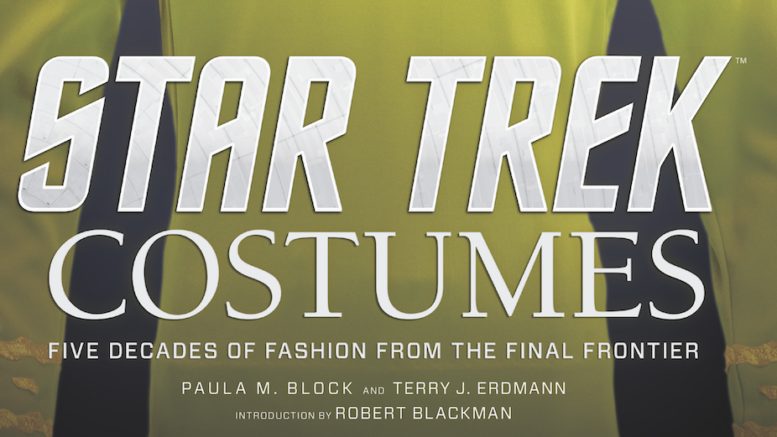
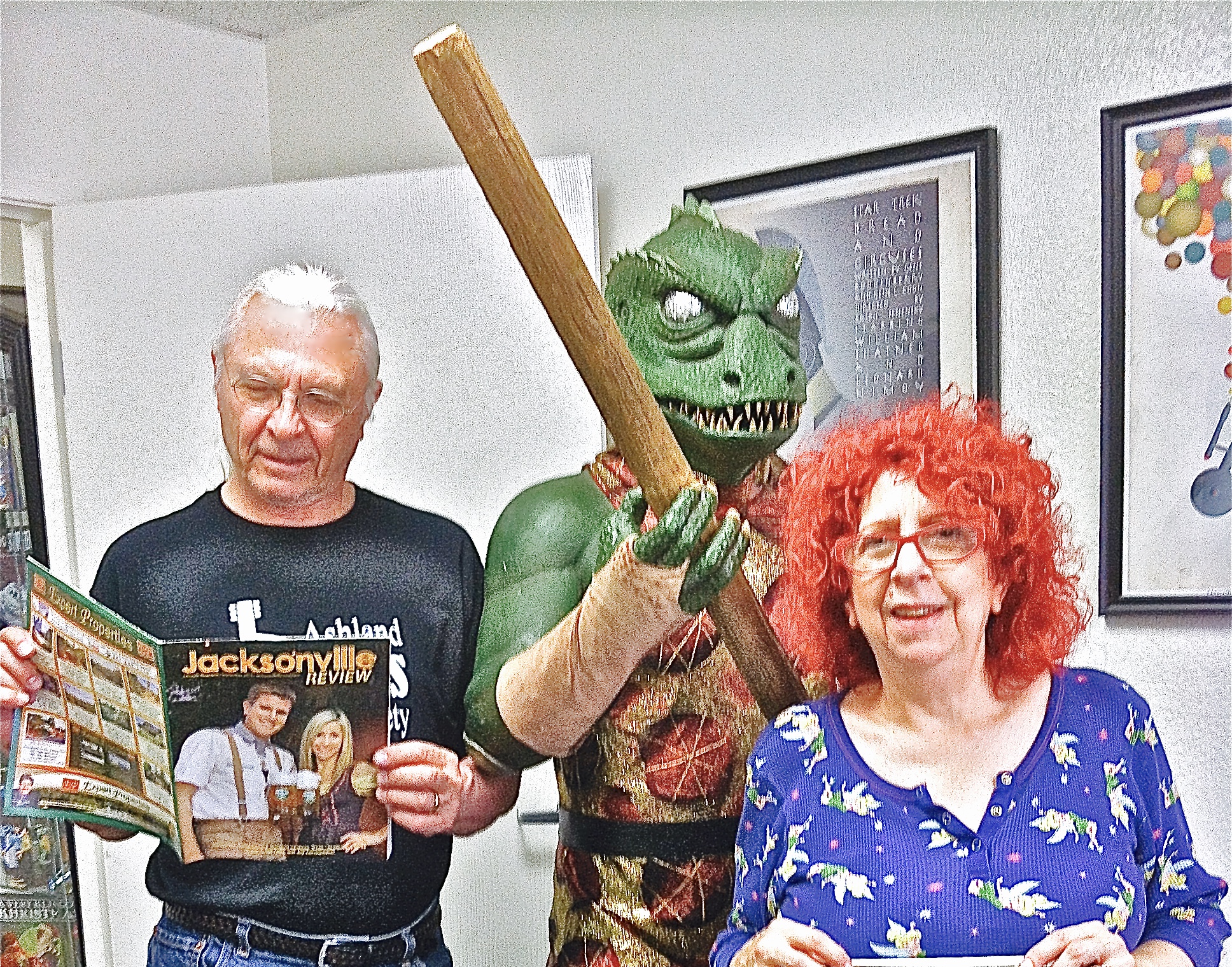
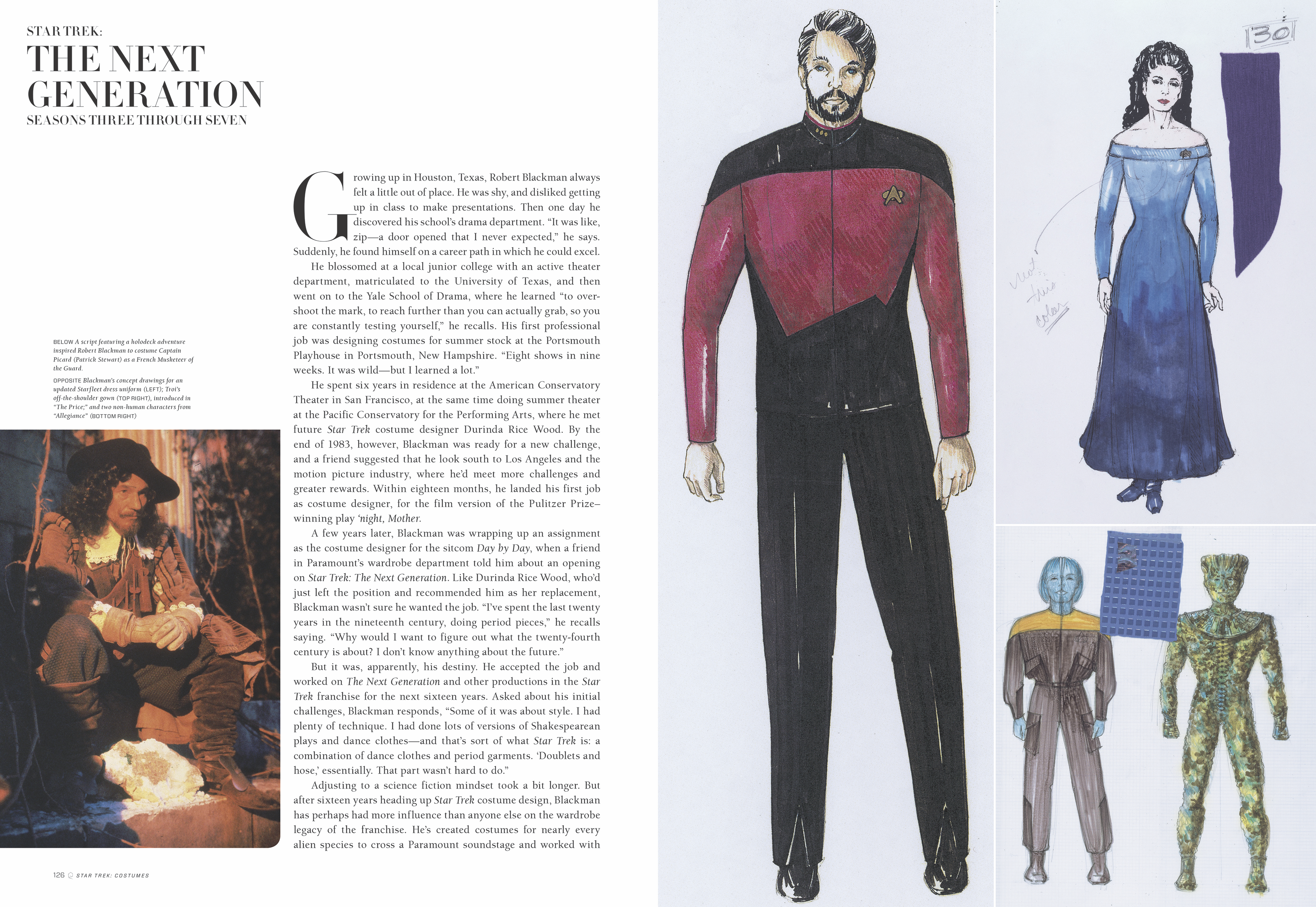
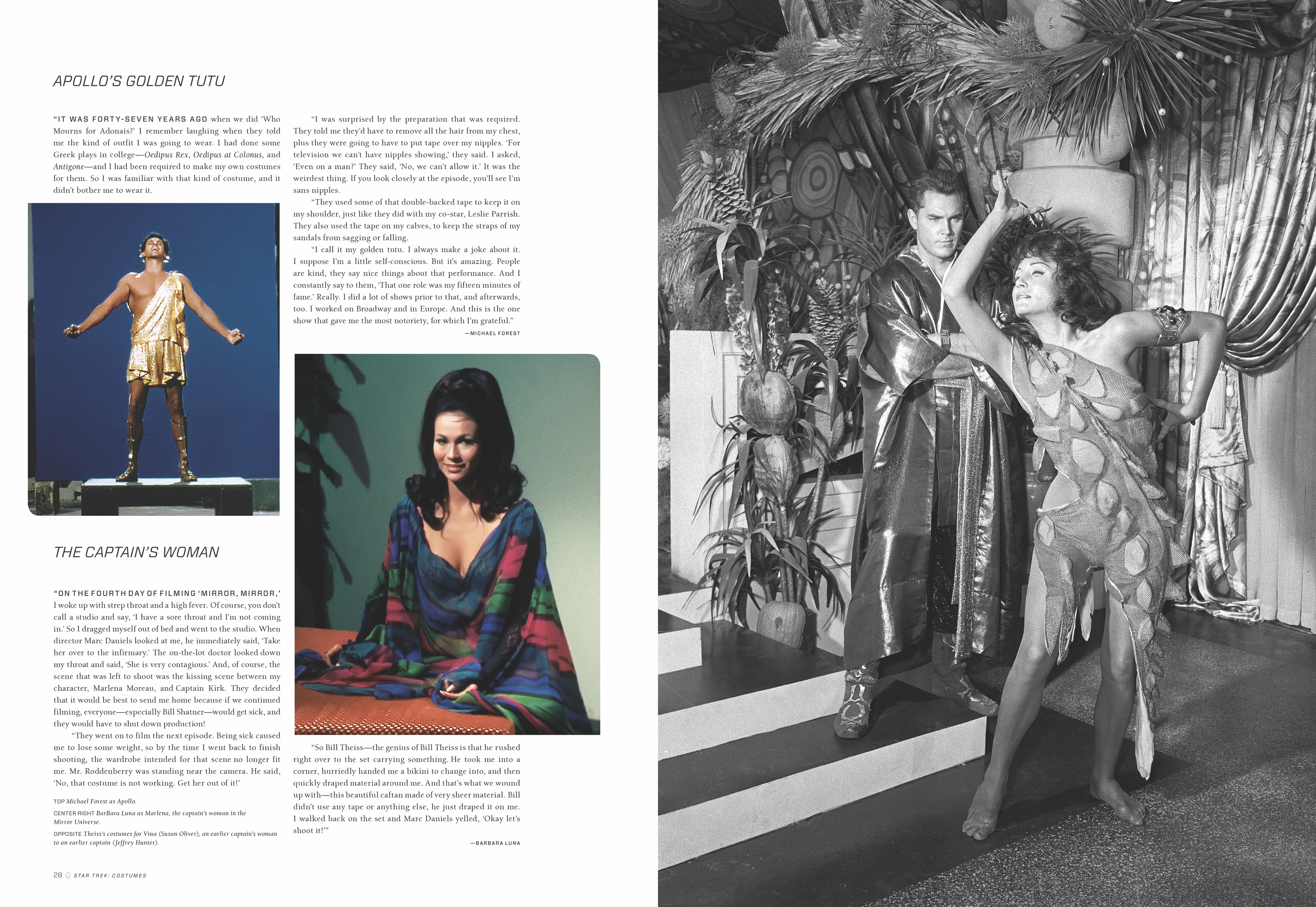




So, the costumes are artisanally crafted entirely from discarded collie hair?
No, but thanks to Shadow and Mandy’s presence, the collie hair is now permanently incorporated in the costumes!
Thank you for having a pet owner’s sense of humor. The book looks cool!
Does Anyone know if the book has pictures of cast in the aborted Star Trek Generations uniforms? I love those uniforms and really would like to see what they would have looked like on the cast.
No. Just the concept art photos.
It is a fantastic book though. One of the best in the last 10 years!
I hope that, where they couldn’t find art or designer sketches, they included a comprehensive set of photographs from the filming of the episodes. Of course then the book would probably weigh 50 pounds!
I hope to buy this book eventually because I loved so many of the costumes, except the inevitable children’s jumpsuits from nearly every series.
I still find myself wondering, when I look at certain costumes from TOS, if costume jewelry was used in unusual ways, such as unit emblems, Klingon uniform decorations, and so much more. Theiss worked on a very tight budget, so he was very creative!
Why no coverage in the book of Dr. Miranda Jones “web-sensor” dress from TOS? What other costume in all of Star Trek was more central to an episode’s plot?
I had the pleasure of a brief “hallway” conversation with William Ware Theiss at one of the early Star Trek conventions in San Diego in 1973 or 1974. He told me that the Star Fleet dress uniforms were made from a fabric called “alloskeen” (no idea if that’s how it’s spelled – just my feeble attempt) that mixed wool and rayon, IIRC. I always wondered if that was where the name was taken for “Commander Loskeen” from “The Tholian Webn”.